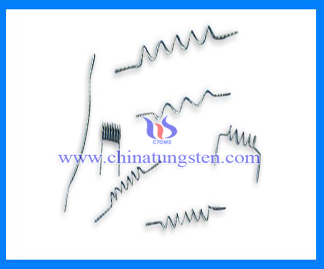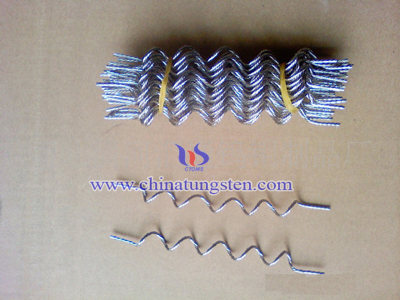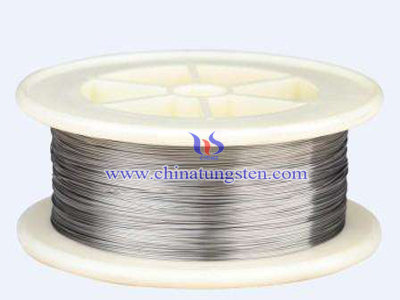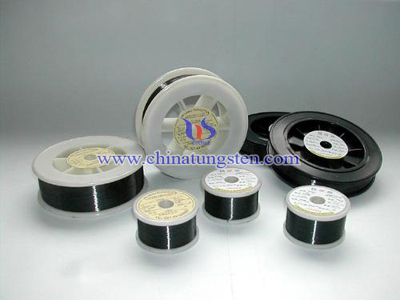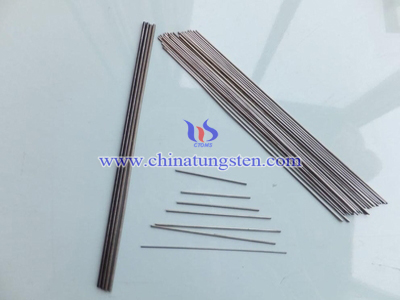Manufacture of Non-sag Tungsten Wire
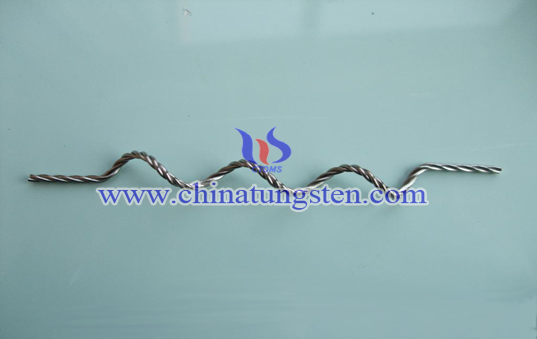
Method of manufacturing a non-sag tungsten wire for electric lamps to essentially eliminate aluminum and silicon as contaminants in a doped tungsten wire, the tungsten wire is obtained by mechanical working of reduced tungsten blue oxide which contains as a primary or major constituent a special hexagonal ammonium tungsten bronze of the general formula (NH4)x (NH3)y WO3. A liquid doping step is carried out by adding a solution containing potassium nitrate, the special doped ammonium tungsten bronze forming preferably more than 70% by weight of the overall tungsten blue oxide. The special hexagonal ammonium tungsten bronze is made by decomposing ammonium tungsten in an ammonium atmosphere, preferably at a temperature between about 400° and 550° C.
Process of making a non-sag tungsten wire for electric lamps To dope ammonium tungsten with potassium, essentially devoid of silicon and ammonium, an aqueous potassium containing solution, preferably potassium hydroxide is added to an aqueous solution of ammonium tungsten, in a mol relationship of potassium to ammonium of between 0.1 and 10. The doped ammonium potassium tungsten is obtained. This ammonium potassium tungsten is then converted to tungsten blue oxide, which is reduced, preferably in hydrogen containing atmosphere and a tungsten powder is then obtained which will be doped with 40 to 120 ppm, preferably about 90 ppm of potassium. Lamps equipped with tungsten wire filaments drawn from so doped tungsten have lifetimes at least 10% more than lamps with conventional tungsten filaments.

